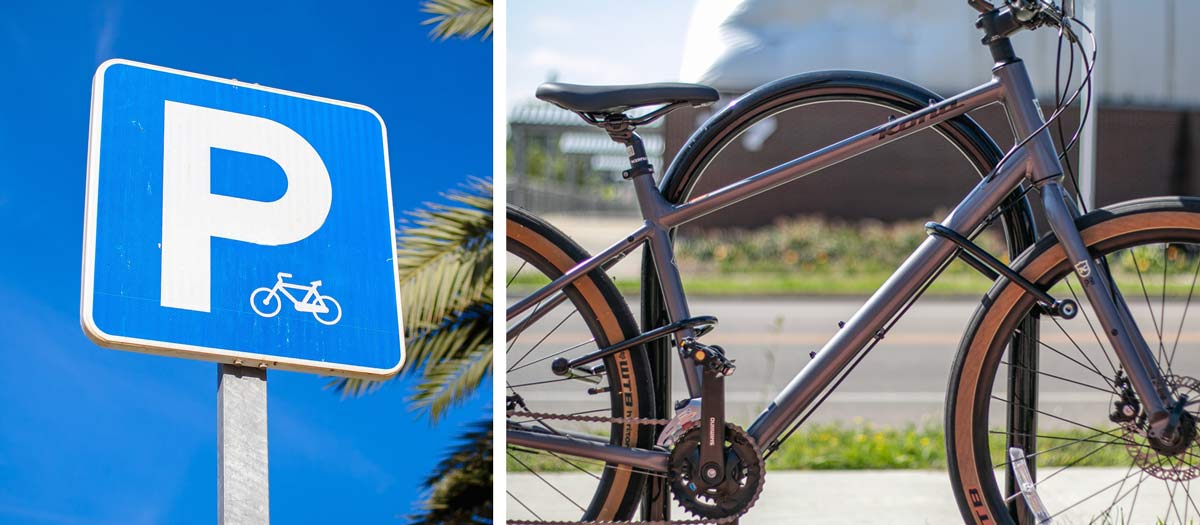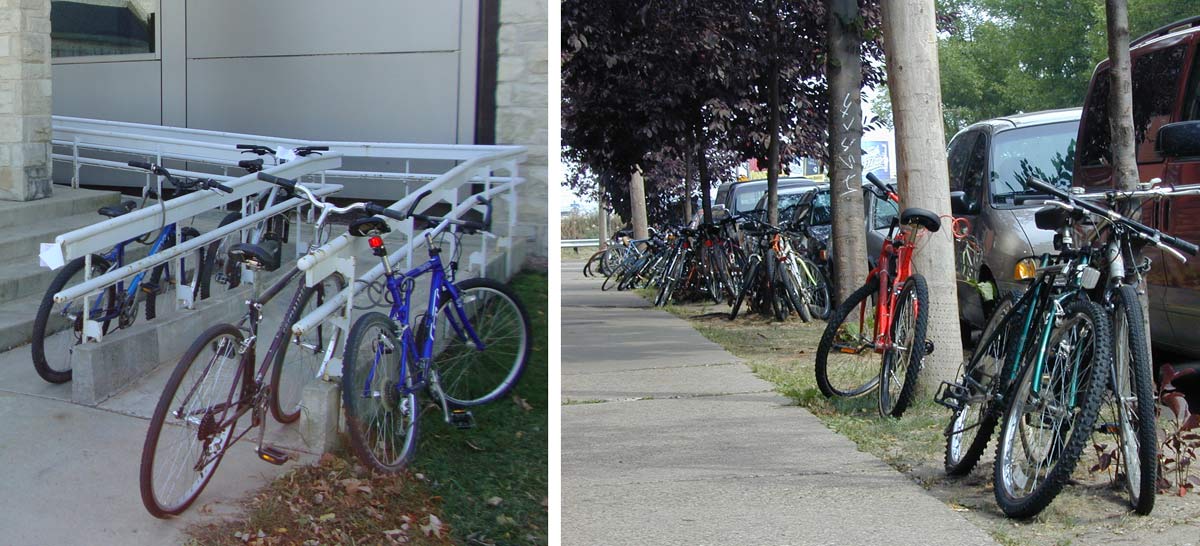Once upon a time, bike parking was a relatively simple task; find an old school rack, – or a tree in a pinch, – and carry on with your day. But as more people look to biking as a transportation and commuting alternative in our eco-friendly focused world, bike parking is now an essential part of responsible cycling, and campus and urban planning. And now with eBikes becoming a major part of the climate-focused transportation conversation, cities and schools alike need to plan for energy conscious cyclists looking to make major changes in their personal carbon footprint.
Whether you’re a seasoned cyclist or a newbie, knowing the do’s and don’ts of bike parking can help ensure the safety of your bike and contribute to a more organized and efficient urban environment. In this article, we’ll explore the key do’s and don’ts of bike parking to help you become a pro at securing your bike.

The Do’s of Bike Parking
Use Designated Parking Areas: Whenever possible, choose designated bike parking areas. These areas are usually equipped with bike racks, posts, or bike lockers specifically designed to securely hold your bike. Using these spaces prevents congestion and maximizes the use of available parking spots.
Lock Your Bike Properly: Invest in a high-quality bike lock and learn the proper locking techniques. The “Sheldon Brown Locking Method” is a popular choice, involving threading the lock through the frame, rear wheel, and an immovable object. Avoid locking just the front wheel or using flimsy locks that can be easily cut. More locations are adding advanced bike racks and bike lockers like Dero’s bike parking systems to encourage people like yourself to consider cycling as an alternative transportation method, and using these systems whenever possible will not only keep your bike secure but will also encourage more cities to provide these services with usage.
Secure Both Wheels and the Frame: Thieves often target easily removable parts like wheels. Prevent this by locking both wheels and the bike frame to a fixed structure. If you have quick-release wheels, consider using a secondary cable lock for added security.
Choose Well-Lit and Visible Locations: Opt for bike parking areas that are well-lit and within the sightline of pedestrians and potential witnesses. This deters thieves and increases the chances of your bike being noticed if someone attempts to tamper with it.
Respect Parking Regulations: Just as with cars, there may be regulations for bike parking. Follow any posted guidelines or restrictions to avoid fines and contribute to a clutter-free environment.

The Don’ts of Bike Parking
Don’t Block Pathways: If you’re unable to find a dedicated bike parking system or station in your location, it’s important to avoid parking your bike in a way that obstructs walkways, ramps, or building entrances. Consider the convenience and safety of pedestrians when choosing your parking spot.
Avoid Trees and Signposts: While it might seem convenient, the days of being able to lock your bike to trees, signposts, or other non-designated structures are gone. Parking your bike on a tree can damage it, and attaching it to a signpost can impede the function of the sign. Use proper bike racks instead.
Stay Clear of Handrails and Handicap Spaces: Never lock your bike to handrails or in handicapped parking spots. These areas need to be accessible for everyone, and your bike could be a hindrance.
Don’t Overcrowd: If bike parking spaces are limited, don’t squeeze your bike in a way that takes up more space than necessary. Maximize the available spots by parking your bike neatly and efficiently.
Avoid Locking Only the Front Wheel: Locking only the front wheel leaves your bike vulnerable to theft, as the frame and rear wheel are not secured. Always lock through the frame and both wheels for maximum security.Mastering the art of bike parking involves more than just finding a place to lock up your bike. By adhering to the proper do’s and don’ts of modern-day bike parking, you can protect your bike from theft, contribute to a more organized urban environment, and promote responsible cycling practices. Remember to invest in a reliable bike lock, park in designated areas, and be considerate of others when choosing your parking spot. By following these guidelines, you’ll be well on your way to becoming a bike parking pro.








